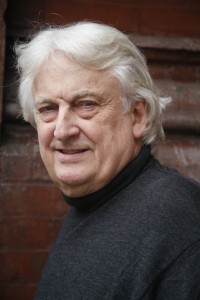This article was originally published in OnSET.
Dr Bryce Vissel is a scientist who believes that if you make smart choices, you can guide your own destiny. Rather than taking the ‘easy route’, he has consistently chosen to work in the place where he felt he could do the best science.
Vissel decided to get into research after a year as a pharmacist, mainly because he felt dissatisfied with the work, but also, he says, because “I was not very good at wearing a tie”. He completed his PhD at the Murdoch Institute in Melbourne, which lead to major fellowships at the Garvan Institute and the Salk Institute in California, where he received the prestigious Hereditary Disease Foundation Lieberman Award for his work in neuroscience. Vissel now runs a lab in the Garvan Institute that conducts stem cell research and research into synaptic plasticity, the ability of neurons to modify their connectivity in response to experience, which is important in learning, memory, drug addiction, and thought to be significant in schizophrenia.
For Vissel, his career is rewarding on both scientific and humanitarian levels. Teaching is fun and it is always gratifying to have research published in high-impact journals and recognised by other scientists through citation. However, the best part is the opportunity to interact with the community. His work relates to people with spinal cord injury, stroke, and Huntington’s disease and he finds it “rewarding when you can tell them things that may have a real impact for them in the immediate future”.
Nevertheless, a research career also has its downside, particularly when things do not work. A drawback is that funding depends on good results. Often, the lack of results is no one’s fault, but rather due to the tricky nature of science itself. “Science is not something that you just do as a job,” says Vissel. “It is a passion, and if you have invested yourself in something personally, when things fail, it is more personally frustrating and disappointing.”
Although those times are daunting, “determination, hard work, commitment and doing things a bit out of the ordinary can get you through”. Once sufficient basic knowledge is gained, science becomes a progression of thinking creatively about what discoveries are needed to push a field forward and then beginning to think laterally about what needs to be done, rather than rushing ahead and doing the first thing that comes to mind. “Doing that forced creative thinking can save of time and get you through some great hardships,” says Vissel.
Science in Australia
Many people travel overseas thinking that being at a top institution will turn them into a great scientist. However what they fail to realise is that people do better there because they work harder. “The reality is that you will be working 12 to 14 hours a day, six to seven days a week and you will be exhausted and straining yourself. But after three or four years of that, you will come out with a major publication that will impact the field,” says Vissel.
The same results can be achieved in Australia provided the commitment and conscientiousness is there. According to Vissel, funding for research science in Australia is slowly improving in response to public pressure and the quality of science here is comparable to other leading countries. Often people say that Australians “punch above their weight” because they do so well with so little. Also many people here put their social lives first, whereas “investment early on and hard work pays off enormously”.
In any case, the key to a financially rewarding career in research science is being good at what you do, as in any career. “If you are good at what you do, once you are at a more senior level you will be asked to consult, or be on committees or boards of pharmaceutical companies, and these things add to your salary,” says Vissel.
Science Education
A key part of enthusing young people about science is letting them know that getting to the truly exciting phase of the field takes time. It is important to get the basics in place first no matter how tedious compared to cutting-edge research.
“Science is first taught as a series of facts, and the truth of science in practice is that it is a series of unknowns,” says Vissel. There are many ambiguities and contradictions in science, because no one knows the right answers to any question. Although science is assessed with multiple choice questions even at university level, experts in the field are constantly debating what is the right answer.
Vissel believes that students need to be taught that once they get past the stage of learning the boring “alphabet” of science (the basics), they can start “reading” by understanding the scientific process of studying the unknown, and getting involved in it. Once that stage is reached, science becomes fascinating.
“Unfortunately, many scientists do not transmit this excitement effectively,” says Vissel. “But many of scientists don’t get to experience the excitement of it – they get bogged down in the realities of the day-to-day experiments. But I think it is important, if you are going to be a scientist, to find people who inspire you and who are inspired.”
 This interview was originally published in COSMOS Magazine, issue 49.
This interview was originally published in COSMOS Magazine, issue 49.